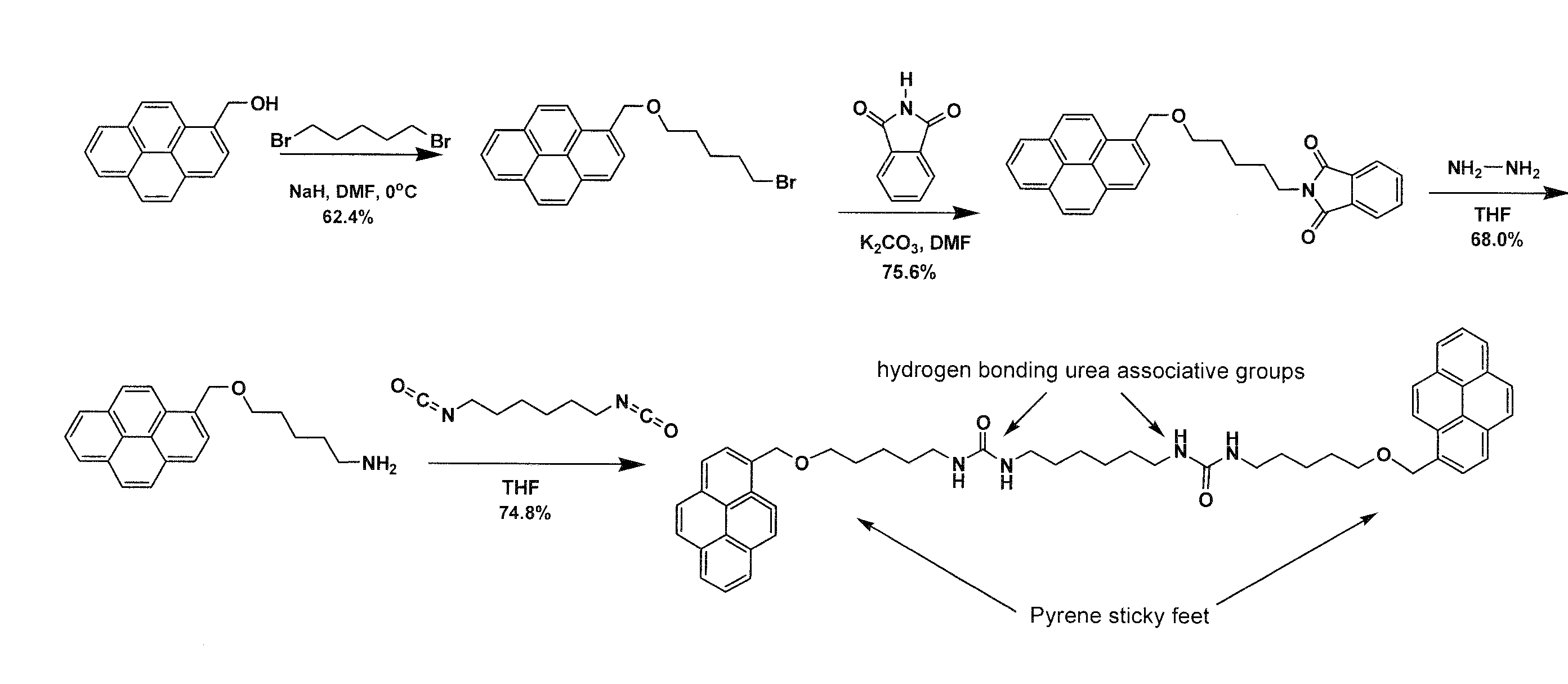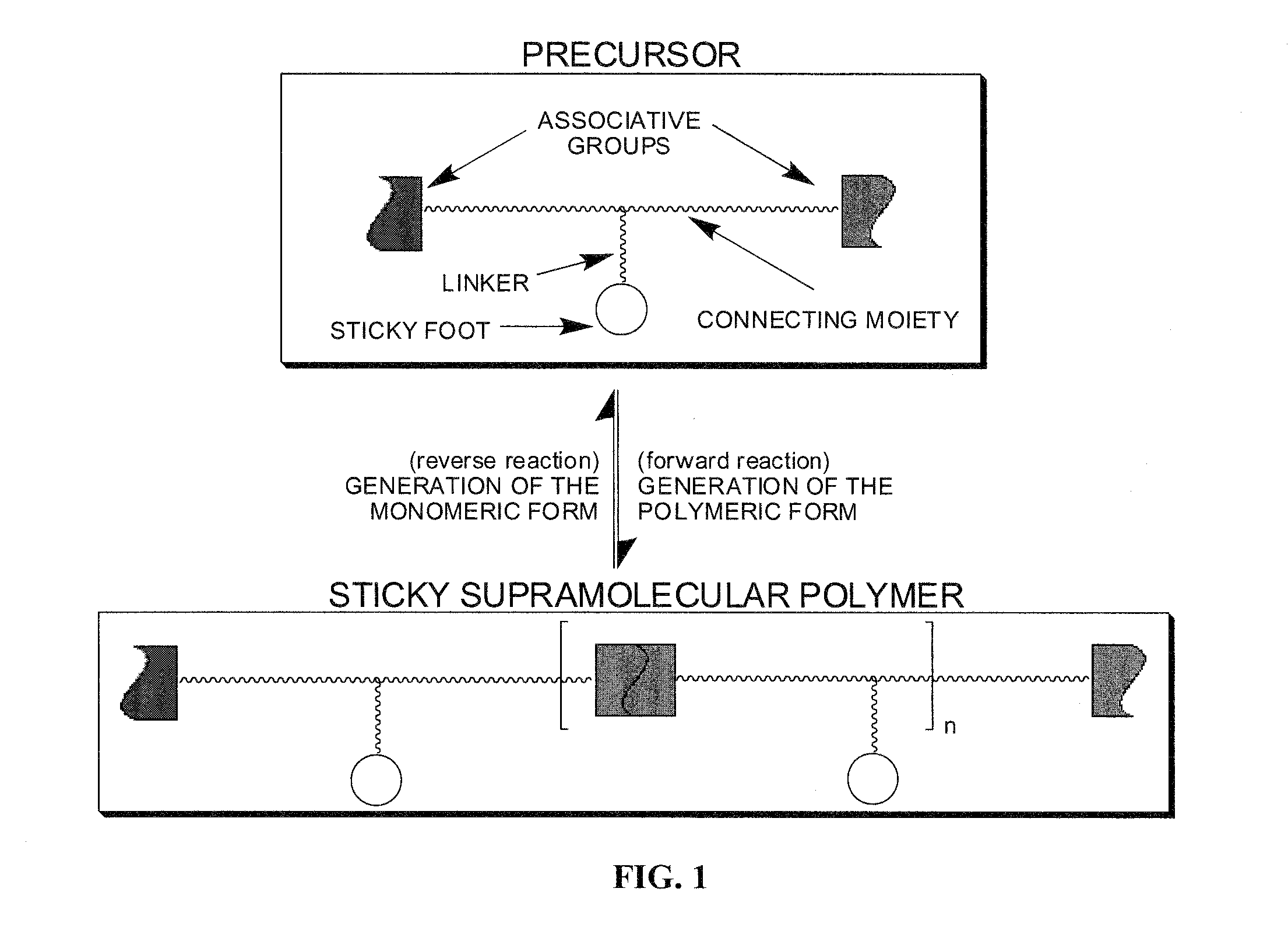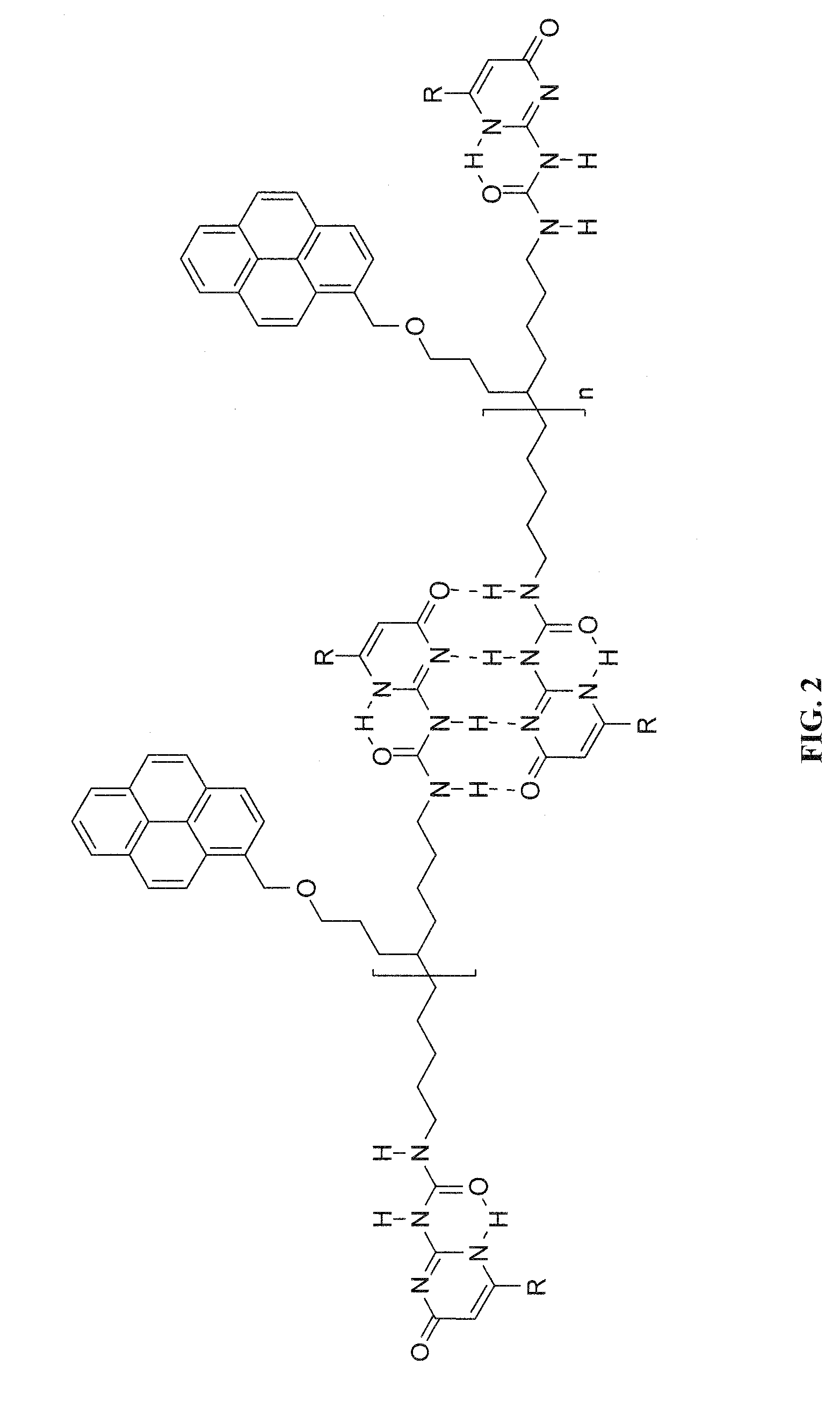Supramolecular Polymers Associative to Carbon Nanotubes
a technology of carbon nanotubes and polymers, applied in the field of supramolecular polymers associative to carbon nanotubes, can solve the problems of severe limitation of the loading of nanotubes in the polymer matrix, the problem of both techniques, and the agglomeration of nanotubes remaining a problem
- Summary
- Abstract
- Description
- Claims
- Application Information
AI Technical Summary
Benefits of technology
Problems solved by technology
Method used
Image
Examples
Embodiment Construction
[0020]The invention is directed to the formation of a composite of carbon nanotubes in a sticky supramolecular polymer matrix, the sticky supramolecular polymers, and the precursors to prepare the supramolecular polymer. One embodiment of the sticky supramolecular polymer is illustrated in FIG. 1. In FIG. 1 a single precursor comprises a backbone, or connecting moiety, which is a non-conjugated short-chain oligomeric material (such as oligomethylene or oligoethoxy) or a conjugated and / or electroactive segment (such as thienyl, fluorenyl, oligothienyl, or oligofluorenyl), functionalized with a single sticky foot by a linking group and two end-groups capable of self-association whose association results in the supramolecular polymer. A specific embodiment is shown in FIG. 2 where the sticky foot is a pyrene moiety attached via a 4 carbon ether linker to a 10 carbon backbone connecting two ureidopyrimidinone associative groups. The supramolecular polymers of the present invention can b...
PUM
| Property | Measurement | Unit |
|---|---|---|
| Temperature | aaaaa | aaaaa |
| Dispersion potential | aaaaa | aaaaa |
| Structure | aaaaa | aaaaa |
Abstract
Description
Claims
Application Information
 Login to View More
Login to View More - R&D
- Intellectual Property
- Life Sciences
- Materials
- Tech Scout
- Unparalleled Data Quality
- Higher Quality Content
- 60% Fewer Hallucinations
Browse by: Latest US Patents, China's latest patents, Technical Efficacy Thesaurus, Application Domain, Technology Topic, Popular Technical Reports.
© 2025 PatSnap. All rights reserved.Legal|Privacy policy|Modern Slavery Act Transparency Statement|Sitemap|About US| Contact US: help@patsnap.com



